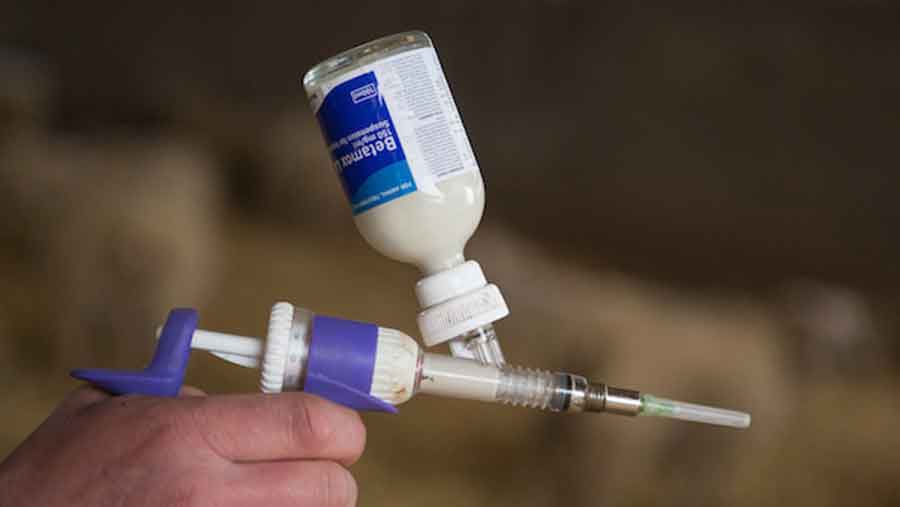4 areas where dairy farmers can cut antibiotics use
 © Tim Scrivener
© Tim Scrivener It is time for the dairy industry to prove it can responsibly use antibiotics so they are not removed from the toolkit altogether, say vets and farmers.
Industry-leading vets and farmers gathered last week (Thursday 29 June) to discuss ways to reduce antibiotics use in the dairy industry at the “Securing Futures” round-table discussion, moderated by Gwyn Jones, chairman of the AHDB and Responsible Use of Medicines in Agriculture (Ruma).
The discussion group, organised and hosted by Elanco at Dairy Crest’s Innovation Centre, agreed the mindset of vets and farmers needs to change to overcome the fear of cutting antibiotics use.
See also: 2020 target to stop using critically important antibiotics
“The progressive vet was seen as the one who could prescribe the best drug, but now the progressive vet is the one looking at the most appropriate drug.”
Tim O’Sullivan
Instead of focusing on using antibiotics as a prophylactic treatment or cure for disease, a more holistic approach needs to be taken to increase animal health and welfare, they said.
Andy Biggs, director of the Vale Veterinary Group in Devon, said antibiotics were too cheap and he had heard how, on some farms, they had been used like Smarties.
He explained that Penstrep (penicillin streptomycin) is now three times cheaper than when he began practising 35 years ago, which makes an investigative approach less attractive.
The group said milk buyers, alongside assurance bodies and the government, all have a role to play in the standards they set.
The group agreed there were four key areas where dairy farmers could cut antibiotics use: Youngstock management, herd health planning and recording, education and collaboration.
1. Youngstock management
Youngstock is an area that is often lagging behind or overlooked in terms of reducing antibiotics use, it was widely agreed.
Disease prevention is key when calves are at an age where there are potential stressors in terms of movements and lower natural immunity.
“I would say colostrum is the number one thing for youngstock. Ensuring calves get enough good-quality colostrum quickly enough is crucial,” said Tim Potter, who is a big proponent of having a health plan for youngstock.
Tips to reduce antibiotics use
- Ensure calves get enough good-quality colostrum
- Have a health plan
- Consider using vaccines where cost-effective
- Weigh youngstock to detect disease problems and ensure they receive the correct dose rates to prevent resistance
- Consider how your calving regime could be improved to increase hygiene and improve management
He explained the success he has seen on some farms where block calving has helped reduce the need for antimicrobials.
Because the calving period is condensed, it is easier to have labour on hand, including night shifts, in order to get colostrum into newborns. Hygiene can also be easier to maintain because thorough cleaning can be done between batches of calves.
2. Herd health planning and recording
Vet Chris Hudson, who is a clinical associate professor at the University of Nottingham’s School of Veterinary Medicine and Science, said for most farms there are probably four or five conditions that account for the vast majority of antibiotics use.
Identifying these on a farm level needs to be the first step in making changes.
Availability of good-quality data makes this much easier, and also allows vets and farmers to identify which management changes are likely to make the most cost-effective difference.
Tips to reduce antibiotics use
- Record your antibiotics use
- This will help you identify areas for concern and improvement
- Benchmark yourself against similar systems
3. Education and training
Glamorganshire dairy farmer Abi Reader highlighted the need for education, training and information sharing in the industry, in order to tackle disease more effectively.
She said farmers also had to be made more aware of the risk of antimicrobial resistance.
Tips to reduce antibiotics use
- Make sure your staff are aware of your treatment policy
- Ensure your workforce can spot early disease signs
- Make them aware of the risks of using antibiotics
Tim O’Sullivan from Shropshire Farm Vets said technology needs to be better in this area and can help vets and farmers with pen-side diagnostics, but “those sorts of technologies are expensive and not very portable at the minute”.
4. Collaboration and communication
Farmer Ed Frost, who has halved antibiotics use on the 140-cow dairy farm he runs with his brother John in Somerset, has fortnightly on-farm vet visits. Once a month, that meeting involves a meeting to look at the antibiotics used on farm.
But this is not common enough practice. Some of the vets agreed it is a challenge for their profession to offer more disease prevention and management advice services as opposed to just being called for treatments and medicines.
Tips to reduce antibiotics use
- Sit down with your vet and review your antibiotics use regularly
- Become proactive to disease management rather than reactive
- Involve the whole team and work towards common goals
Mr O’Sullivan said: “The progressive vet was seen as the one who could prescribe the best drug, but now the progressive vet is the one looking at the most appropriate drug.”
Nick Bell said “a team approach” is needed so that farmers, consultants, vets, nutritionists and other advisers all work towards the same goal.
